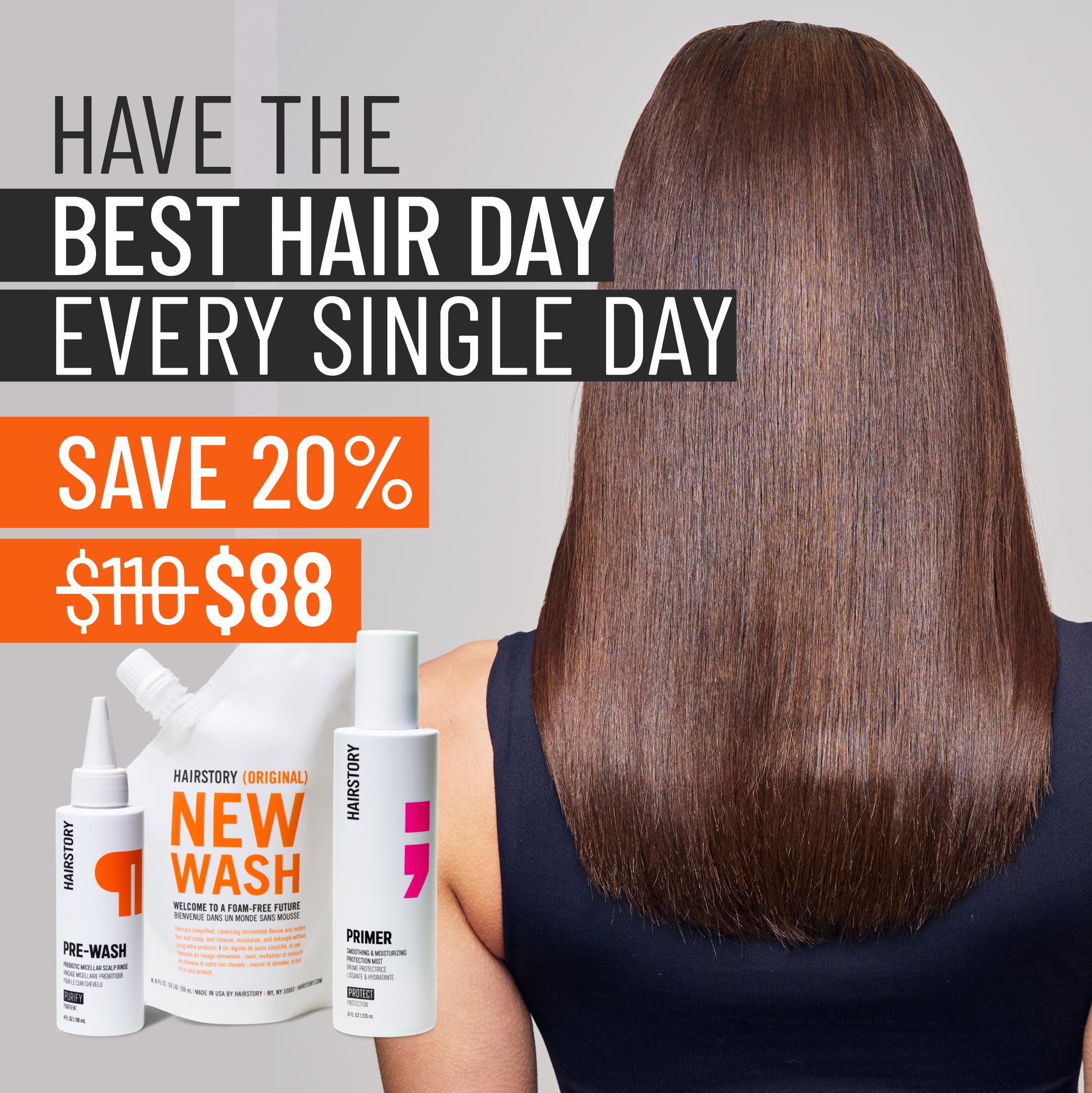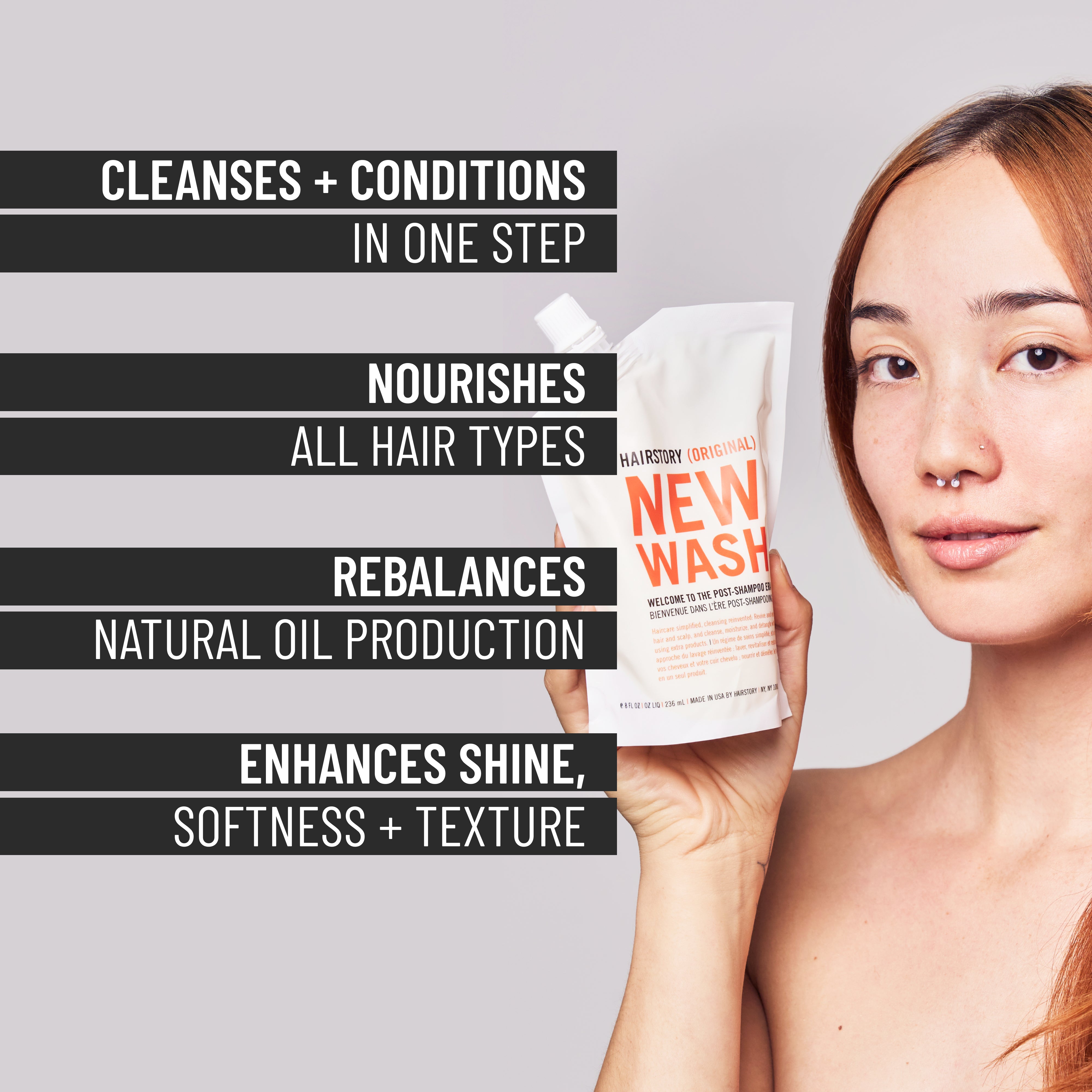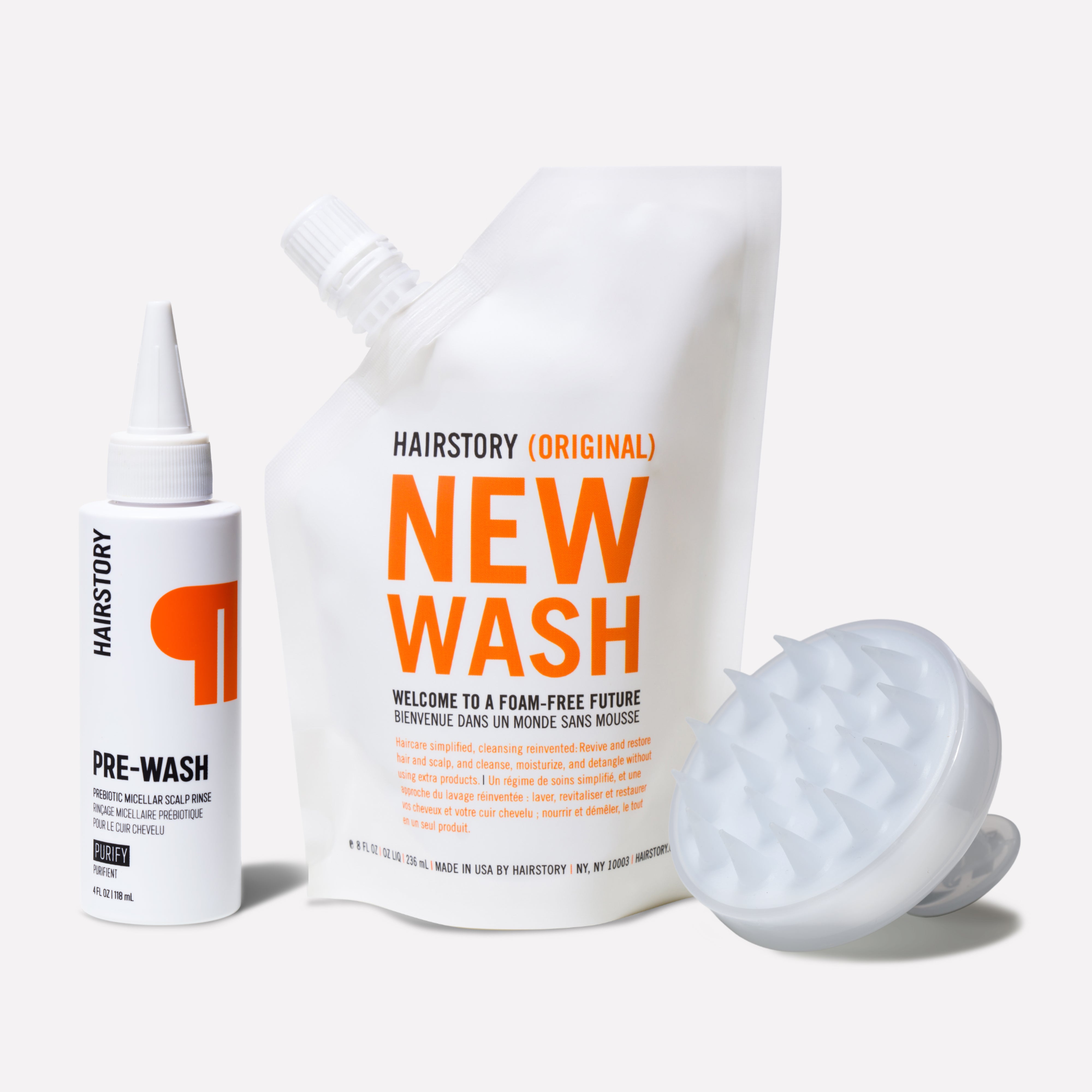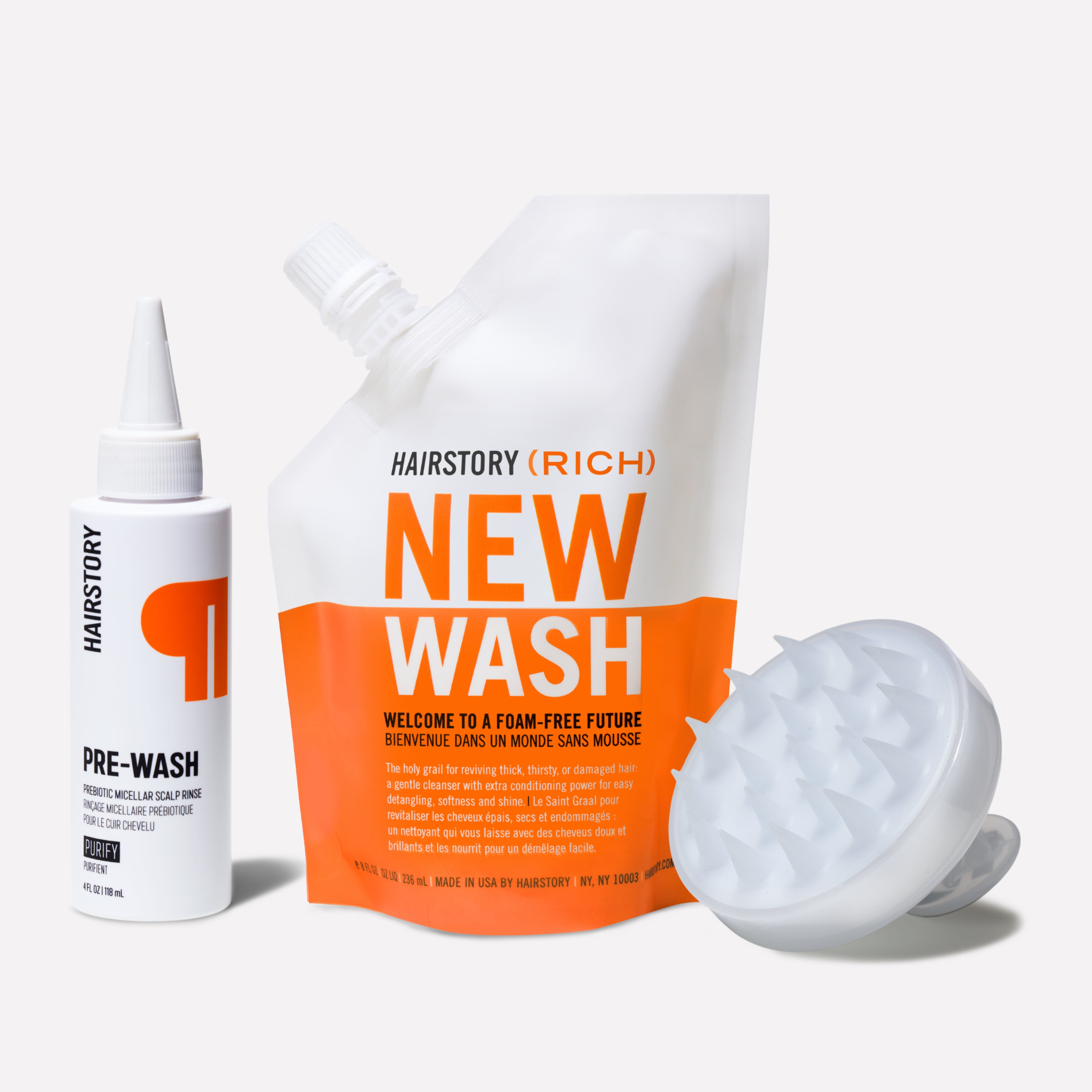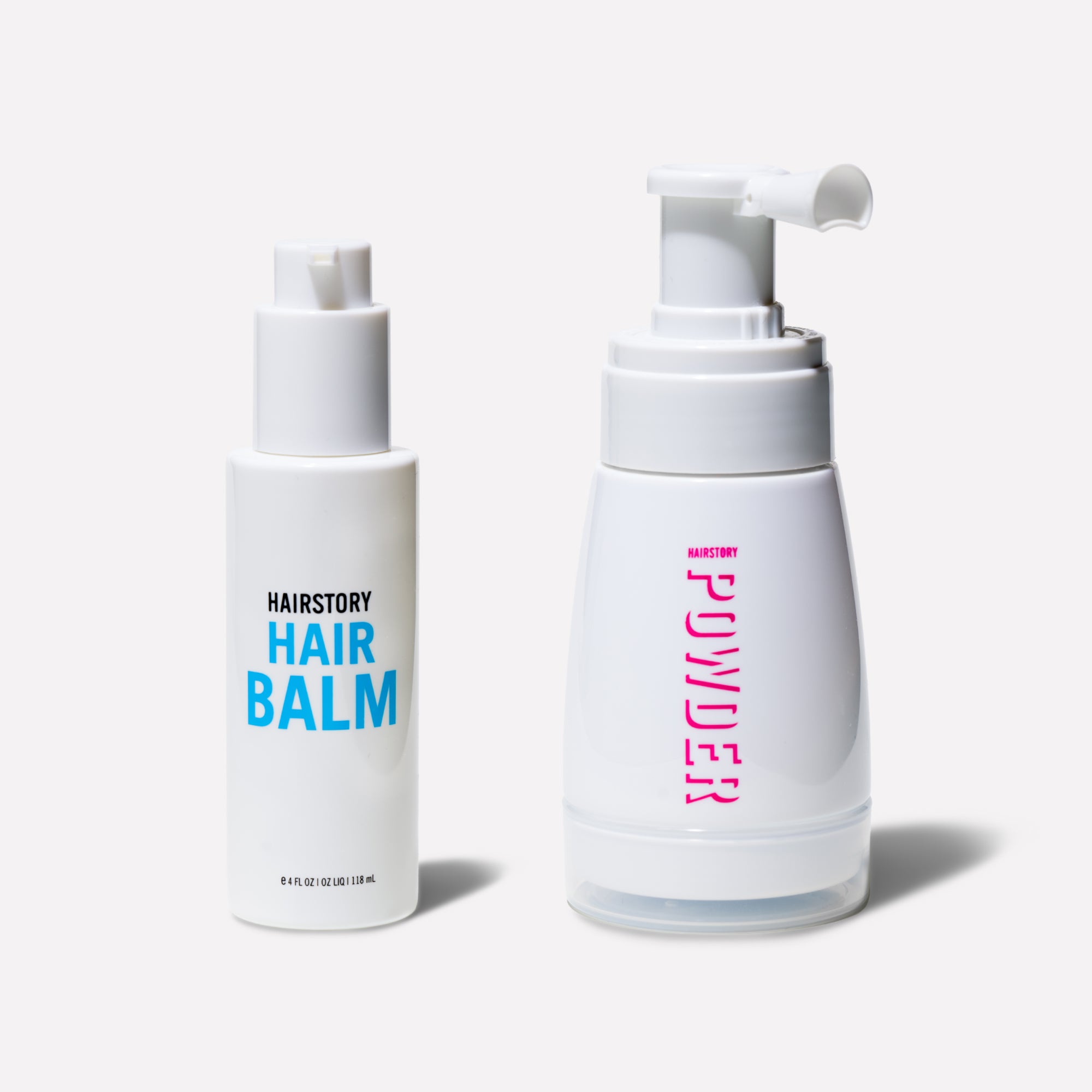BLURRING THE BOUNDARY BETWEEN CLEANSING AND CONDITIONING: DO BOTH AT THE SAME TIME.
Once upon a time, we washed our hair with shampoo and a chaser of conditioner. But, like most aspects of modern life, it’s not so simple anymore. Traditional shampoo has become optional for some people and maligned by many – and conditioner is taking a prime spot in shower real-estate. So what is co washing and the hair cleansing disruption all about? Read on to learn how to co-wash your hair with our best co-washing tips.
WHAT IS CO-WASHING?
Rising up against the industrial shampoo complex and perennially damaged hair, the curly hair community coined the term “co-washing” about a decade ago. Short for conditioner-only washing, the method maintains moisture and puts a stop to dry and frizzy curls.
Many people who partake in not washing hair with shampoo may turn to this as an alternative cleansing method. But to be clear, simple conditioners don’t actually cleanse your hair. While washing hair happens with the force of water and friction of fingers, conditioners keep hair soft, smooth, and sweet-smelling; conditioners alone can’t remove impurities, pollutants, products – and even build-up from the product itself.
Clogged hair follicles inhibit optimal growth and co-washers can avoid this by using a clarifying shampoo a few times a month. Alternatively, try alternating between co-washing and shampooing if you’re not feeling clean enough.
HOW TO CO-WASH YOUR HAIR
Washing with conditioner isn’t quite as simple as it sounds – technique is just as important as the hair care products used to effectively cleanse. When first learning how to co wash, don’t be over-eager to stretch the time between washes; your scalp needs to adjust – and will, on its own time.
This new (yet practically ancient) method can be confusing for the co-washing-curious. How does one get hair clean after all? The hair industry’s response to this shampoo-savviness was to join rather than beat, and it created a new class of cleanser from the conditioner up. Dashes of detergents commonly found in shampoo were added to cremes and lotions and launched as “cleansing conditioners,” “low-poos,” and even “no-poos.”
Co washing curly hair has become popular and has proven many benefits. Thick, curly, or naturally dry hair types can respond to any conditioner, labeled as cleansing or not. But if you have fine and oily, you may require more cleansing power to wash your hair.
- Fully soak your hair with warm water to loosen debris. If very thick, separate hair into several sections. Once saturated, squeeze out excess water.
- Squeeze out a generous amount of product – enough to coat the scalp and hair from root to tip, and more than you’re probably used to. Apply in sections if necessary.
- Massage the cream into your scalp with fingertips (not nails!) to exfoliate. Distribute the conditioner through to the ends, and let it sit for a few minutes.
- Rinse thoroughly.
- Consider a second round if your hair is very dry, especially at the ends, and rinse thoroughly.
- Dry carefully, and style. You may discover that your hair requires less effort and fewer styling products as its condition improves.
There are anti-shampoo purists who take washing to the extreme by practicing water only hair washing – no “co” required. It’s not for everyone, but they do use advanced techniques you might try to help stave off the suds.
We wish you success on your shampoo-free journey, and may we suggest a destination? Take a look at New Wash for the best of both worlds: neither shampoo nor conditioner – made without detergents or silicones. Made for all hair types, this product will cleanse your hair without stripping it of its moisture. It cleanses with an ingenious blend of Aloe Vera with essential oils and extracts that condition at the same time. Bon voyage!


